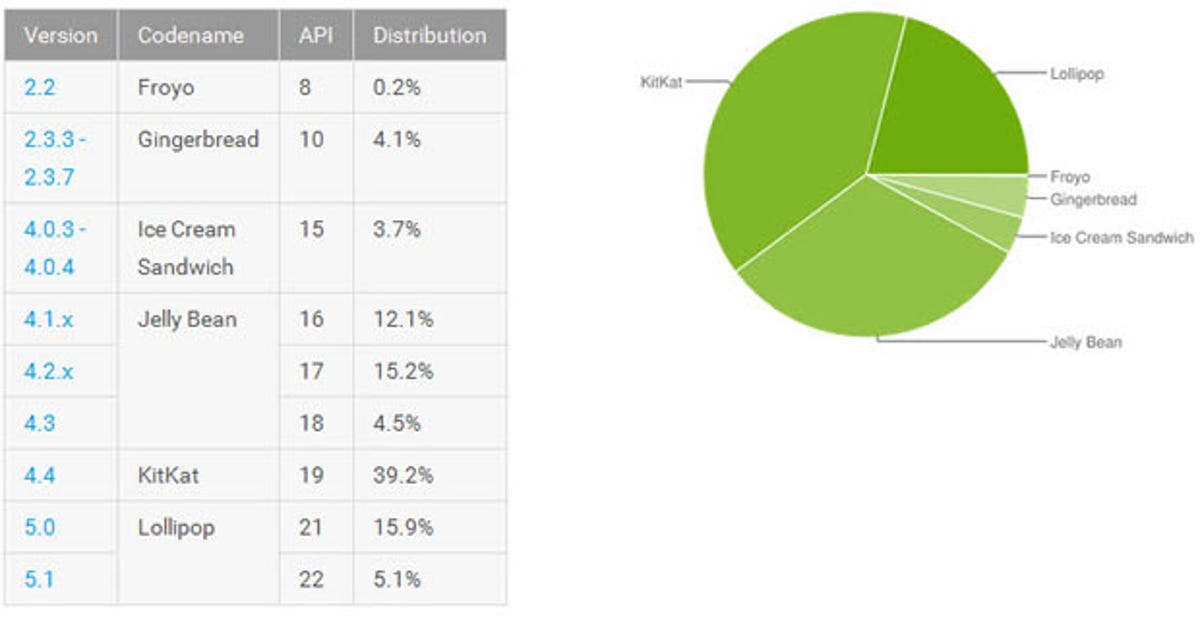
Nicole Cozma/CNET
Android Lollipop is on less than a quarter of all Android devices 10 months after its release.
Released on Tuesday, the newest update to Google’s Android Developers Dashboard shows a share of 15.9 percent for Android 5.0 and a share of 5.1 percent for Android 5.1, totaling 21 percent. That’s a small but growing increase from the 18 percent seen at the beginning of August.
The latest percentage was calculated by tracking all of the Android devices that visited the Google Play store during the 7-day period ending Monday.
Launched in November 2014, Android Lollipop has taken almost 10 months to achieve its 21 percent slice of Android devices. That seems like a long time to get to that point. In contrast, Apple’s iOS 8, which was launched in September 2014, is on 87 percent of all iOS devices as measured by the number of App Store visits on August 31. Why the disparity? The issue rests with the way Android updates are rolled out.
Google first has to create and test a new version of Android. Then the mobile device makers do their own testing. And unlike iOS, which includes just three devices — the iPhone, iPad and iPod Touch — Android is flooded with hundreds and hundreds of different devices from various manufacturers, all of whom must test a new version or update on each of its devices. Finally, the mobile carriers step in to test and deploy a new version of Android. Apple’s steps for updating iOS are much quicker and simpler since the company controls the entire process from start to finish — developing, testing and then rolling out the new version.
The Android process leads to something called fragmentation where at any given time, several different versions of Android may be in use. That frustrates users who are continually waiting for the latest version. And it frustrates developers who must decide which versions of Android to support.
Android 5.0 Lollipop added several new features, including a new look dubbed Material Design, notifications on the lock screen and smarter multitasking. In March, Google unveiled Android 5.1, which resolved some technical glitches with 5.0 and introduced high definition voice calling and better security.


The latest stats from the dashboard show Android 4.4 KitKat — which preceded Lollipop — in the lead with a 39.2 percent share, followed by KitKat predecessor Android 4.x Jelly Bean with 31.8 percent. Older versions such as Ice Cream Sandwich and Gingerbread continue to appear on the radar with shares of 3.7 percent and 4.1 percent, respectively. Some older Android devices are unable to run the latest OS and so remain stuck with their original version.




